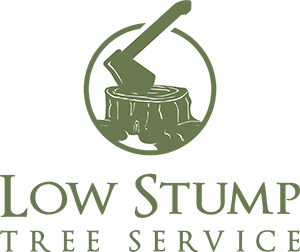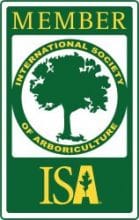Fungi: Marssonina tremulae
SIGNS / SYMPTOMS:
Tree Canopy leaves will develop a “pre-mature fall coloring;” canopy will begin to thin dropping dead leaves. Visual inspection of individual leaves will show Large angular rust-brown, or black splotches. (dark brown flecks with light centers develop. These spots gradually enlarge and coalesce to form large necrotic (dead) blotches on the leaves. Areas around the dark spots usually turn chlorotic or yellow. Ref:)
LIFE CYCLE:
Fungi spores first emerge in early spring “bud-break” Infections develop on lesions of new shoot growth, and in fallen infected leaves. Spores that were produced on previous years shoot growth, are released in the spring during wet weather. Spores are then transferred through raindrops, sprinkler systems, and wind to adjacent leaves causing secondary infection. Can become Epidemic Mid-summer to Late-summer. Repeated Infection in successive years can lead to systemic infection, and ultimately death of the tree.
MANAGEMENT:
*Can be confused or misdiagnosed as conditions of chlorosis and iron deficiency. Attention must be taken to properly identify. However most trees with Marssonina infection are also suffering from Chlorosis and Iron deficiency, and should be treated in combination.
Cultural Control Method: Removal on any and all infected material, including fallen leaves and infected branches, wherever/whenever possible. Removal of leaves in FALL SEASON before snow fall is critical to impact secondary, and systemic infections.
Environmental Control Method: Improve health of tree with attention taken to improving root zone, and applying soil amendment of chelated Iron (Fe). Top Dressing of Compost will also increase available nutrients for absorption. Removal of infected tree, may be best practice to ensure long term health of tree stand.
Chemical Control Method: Fungicide can be applied foliar to emerging leaves at bud-break; this could be considered the best first step, for heavy infected trees. Application of Chelated Iron (Fe) applied to root zone will help areas of chlorosis conditions. Use of Cambistat Growth Regulator to increase the production of Abscisic Acid. (root growth, and stoma strength). Cambistat application is highly recommended for any “High Value” Landscape trees, as most landscape trees are inevitably in a stressed condition.
TREATMENT:
Cambistat:
Apply every 3 years. $10/inch trunk diameter
Chelated Iron:
Apply Anytime during growing season; $55/Bag (treats 100sqft of root zone)
Fungicide Spray:
Applied at “Bud-Break” Follow-up treatment may be required if wet conditions persist. $3.00 per gallon. (Average mature trees require 5-7 gallons per tree)



